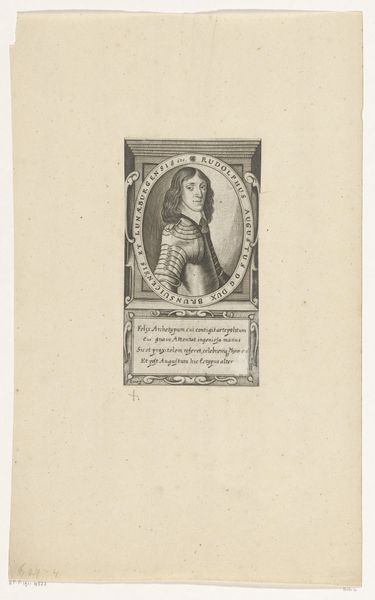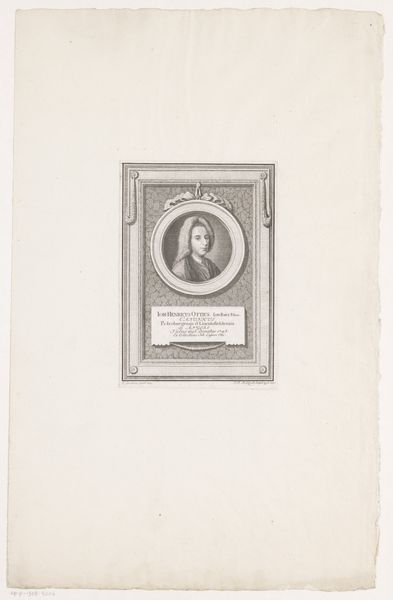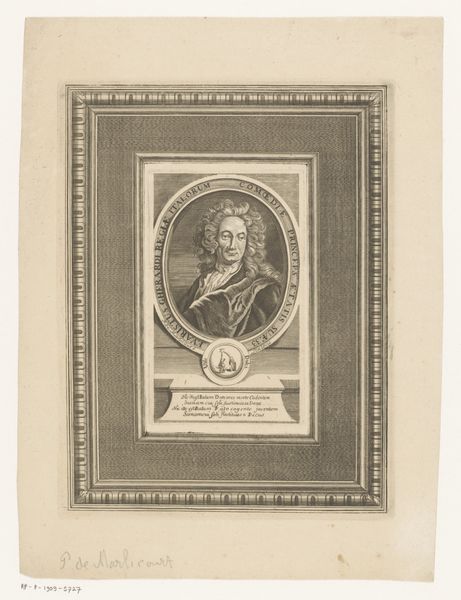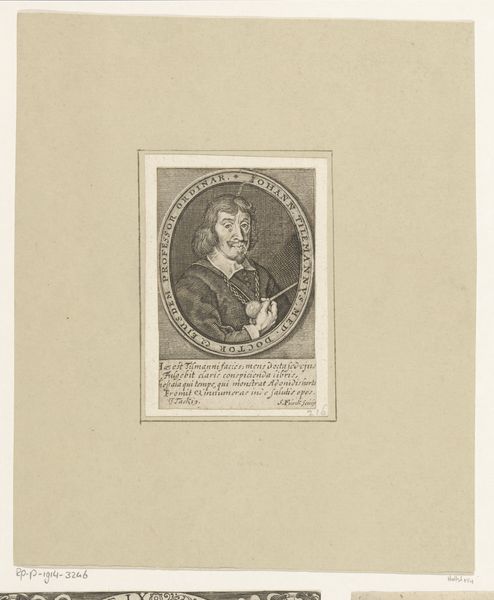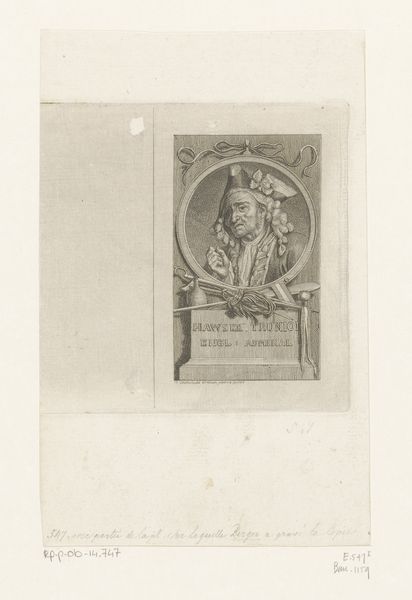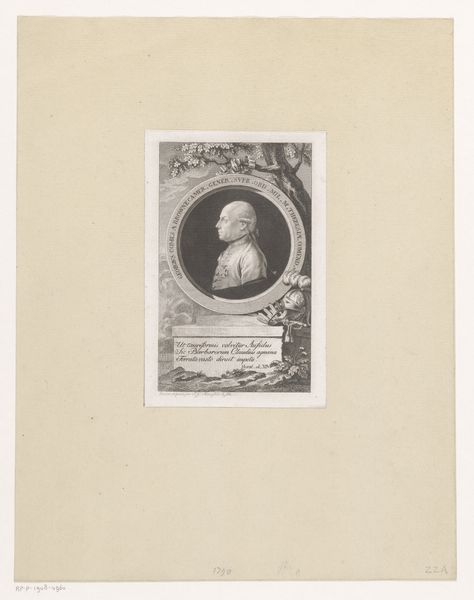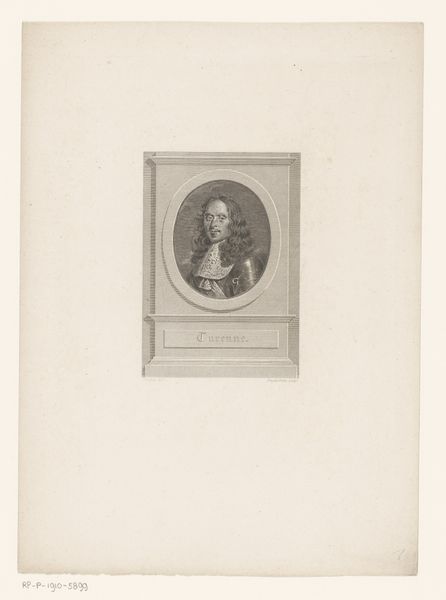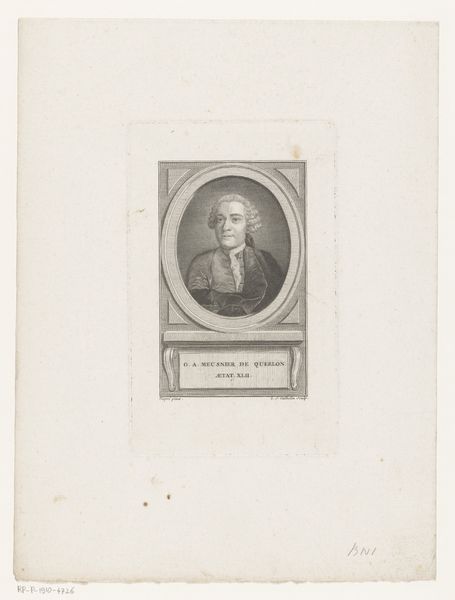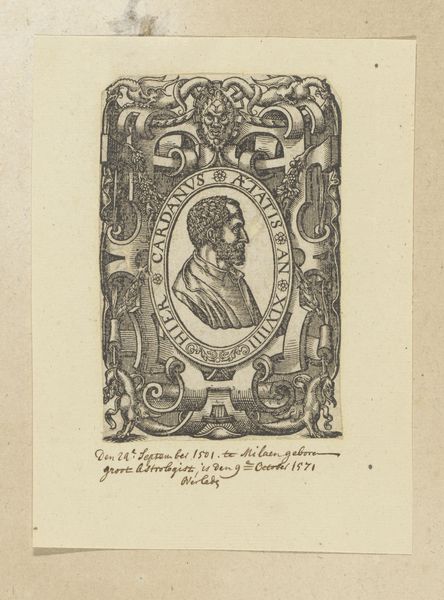
Portret van Ferdinand Albrecht I von Braunschweig-Wolfenbüttel-Bevern 1649
0:00
0:00
print, engraving
#
portrait
# print
#
history-painting
#
engraving
Dimensions: height 132 mm, width 73 mm
Copyright: Rijks Museum: Open Domain
Editor: This is "Portret van Ferdinand Albrecht I von Braunschweig-Wolfenbüttel-Bevern," a 1649 engraving by Conrad Buno. The small size makes it seem quite formal and stiff; almost like a postage stamp of nobility. How do you interpret this work? Curator: This portrait provides an interesting lens through which to examine the construction of power and identity in the 17th century. Prints like this circulated widely, shaping public perceptions. Consider Ferdinand Albrecht's lineage, his role in a society deeply structured by class and religious conflict following the Thirty Years' War. How does Buno’s artistic style support or challenge the sitter's self-presentation and historical circumstances? Editor: Well, the text below the portrait, though I can't fully decipher it, appears to offer a kind of formal validation or endorsement. Curator: Exactly! Think about the intended audience and the potential propaganda at play. The elaborate framing and formal pose aimed to project an image of authority. The text, likely in Latin, reinforces the sitter's elite status and virtues. But it’s vital to think critically: whose perspective is prioritized here? Does this image offer any insight into marginalized populations or the power dynamics that maintained such a social order? Editor: I never considered that the distribution of images like these could serve a particular ideology. It definitely prompts new questions about access, representation, and social messaging within art history. Curator: Precisely! By investigating the visual strategies and historical conditions surrounding this image, we uncover rich avenues for further critical analysis and open our minds to the intricate relations between artistic works and power.
Comments
No comments
Be the first to comment and join the conversation on the ultimate creative platform.
